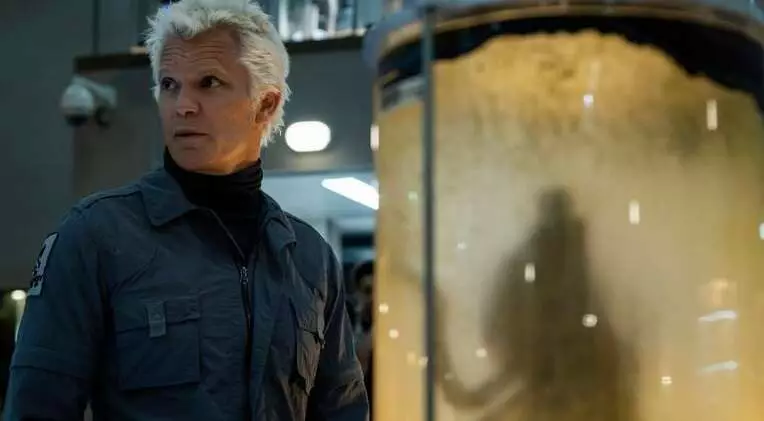The “Alien” franchise has long been a benchmark in science fiction horror, but its legacy is far from monolithic. Each installment—ranging from Ridley Scott’s atmospheric original to James Cameron’s adrenaline-fueled sequel, and beyond—embodies a distinct vision, reflecting the evolving nature of horror and sci-fi storytelling. This diversity has often sparked debate among fans and critics alike. Some praise the original for its minimalist terror and atmospheric tension, while others find new meaning in the franchise’s more extravagant or experimental entries. This cacophony of styles illustrates that “Alien” isn’t a single narrative but rather a multifaceted myth that can be reinterpreted in numerous ways, each bringing unique strengths to the table.
What is evident, however, is the series’ capacity for reinvention. Showrunner Noah Hawley’s sentiments echo this point—asserting that each film contributes something valuable to the mythos, even if they diverge wildly in tone and execution. Hawley seems to recognize that the series’ richness lies in its versatility, embracing the boldness of films like “Alien Resurrection” or the experimental nature of Ridley Scott’s prequels. This openness to varied storytelling approaches has allowed the franchise to remain relevant, even as it continually adapts to new cinematic landscapes.
Returning to the Roots: Nostalgia and Aesthetic Choices
Hawley’s focus on the first two films’ aesthetic resonates deeply with fans who appreciate retro-futurism’s unique charm. He emphasizes that the technological and visual styles of “Alien” (1979) exemplify a specific era’s imaginative possibilities—an era when design was driven by simplicity, functionality, and tangible craftsmanship. By choosing to lean into this retro-futuristic look, Hawley demonstrates a conscious rejection of the more advanced, and perhaps more sterile, aesthetics of newer entries like “Prometheus.”
This decision isn’t merely about visual preferences; it’s a strategic move that taps into the core of what makes “Alien” resonate emotionally. Nostalgia, when harnessed properly, can deepen storytelling, grounding futuristic horror in familiar textures and impressions. Hawley’s insistence on this visual authenticity underscores a broader belief: that the power of “Alien” lies in its primal, tactile sense of danger rooted in a gritty, tangible universe. This aesthetic choice reinforces the feeling that these stories are not just about alien creatures but about human fears faced in settings that feel both otherworldly and convincingly real.
Reshaping the Myth: Reintroducing Mystery and Shock
Perhaps Hawley’s most compelling ambition is to re-mystify the creature at the franchise’s heart—the Xenomorph. Over the years, the creature’s lifecycle and abilities have expanded into a labyrinth of grotesque twists. While some see this as creative evolution, Hawley perceives it as a dilution of the creature’s original terror. His desire to “re-mystify” it suggests a focus on fundamental horror, stripping away excess and returning to the unknown—the true source of fear.
This approach is particularly relevant considering the franchise’s tendency toward ever- escalating monstrosity. Hawley aims to recapture the sense of curiosity and dread that made the original so compelling. Instead of revealing all aspects of the creature’s biology and potential, he advocates for maintaining an aura of mystery, thereby preserving the element of surprise. This strategic pivot could reinvigorate interest in the series, shifting the emphasis back onto suspense and primal fear rather than spectacle.
Innovation as a Response to Evolving Audiences
The franchise’s ongoing relevance depends on its ability to surprise audiences, a task that becomes increasingly challenging with each new movie or series. Hawley’s comments suggest a nuanced understanding that the audience no longer accepts straightforward horror; they crave unpredictability and deeper psychological engagement. His efforts to introduce fresh ideas and new narrative angles show a willingness to challenge conventions and push the franchise into uncharted territory.
Furthermore, the impact of external factors like COVID-19 has forced creative teams to re-evaluate production and storytelling strategies. Hawley’s series, “Alien: Earth,” reflects this adapting mindset—striving to balance homage with innovation. The franchise’s future hinges on this delicate act of honoring what came before while pioneering new territory that resonates with contemporary viewers who are more skeptical but also more receptive to complex, layered horror.
Ultimately, “Alien” continues to be a phenomenon because it refuses to be static. It’s a living myth, constantly reshaped by its creators’ visions and audience expectations. Hawley’s perspective demonstrates a conscious effort to push the narrative boundaries, ensuring that the franchise remains not just relevant but profoundly impactful for generations to come.

